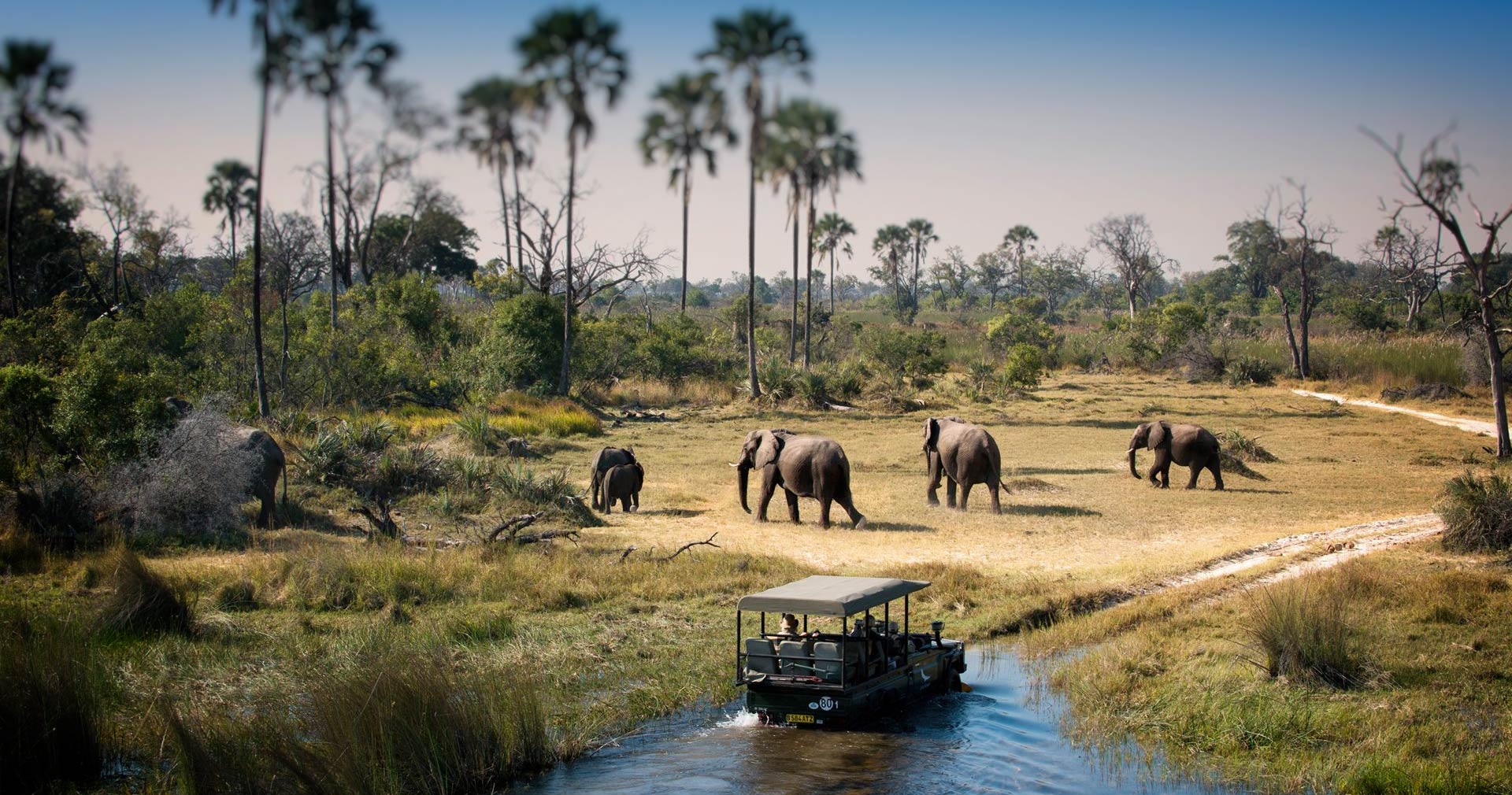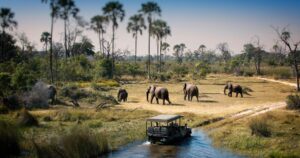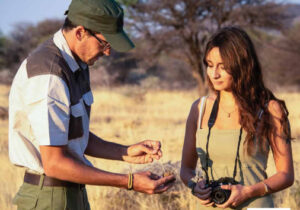Exploring Botswana’s Chobe National Park: A Wildlife Haven
Chobe National Park, located in the northern part of Botswana, is a gem for wildlife enthusiasts and safari-goers. Covering nearly 12,000 square kilometers, Chobe is renowned for its diverse ecosystems, vast herds of elephants, and breathtaking landscapes. In this article, we will delve into the wonders of Chobe National Park, highlighting its unique features, the incredible wildlife that calls it home, and why it should be at the top of your safari destination list.
The History of Chobe National Park
Chobe National Park, established in 1967, was the first national park in Botswana. It was named after the Chobe River, which forms the park’s northern boundary. The park’s creation was a significant step in wildlife conservation in Botswana, aimed at protecting the diverse species and unique landscapes of the region.
Geography and Ecosystems
Chobe National Park is divided into four distinct ecosystems, each offering a unique wildlife experience:
The Chobe Riverfront
The Chobe Riverfront is the most popular area of the park, known for its stunning views and high concentration of wildlife. The riverfront is a lifeline for many species, especially during the dry season when water is scarce elsewhere. Visitors can enjoy boat cruises and game drives along the river, witnessing herds of elephants, buffaloes, and other animals coming to drink.
Savuti Marsh
The Savuti Marsh is famous for its predator activity. This area is characterized by its open plains and marshlands, attracting large prides of lions, hyenas, and leopards. The unpredictable Savuti Channel, which periodically floods and dries up, adds an element of surprise to the landscape.
Linyanti Marshes
The Linyanti Marshes, located in the northwest part of the park, are known for their remote and untouched beauty. This region offers excellent birdwatching opportunities and is home to the elusive and endangered African wild dog. The Linyanti River and its floodplains create a unique habitat for a variety of wildlife.
Nogatsaa and Tchinga
Nogatsaa and Tchinga are lesser-known areas of Chobe National Park, offering a more secluded and off-the-beaten-path safari experience. These regions are characterized by their mixed woodlands and seasonal pans, attracting a variety of herbivores and predators.
The Wildlife of Chobe National Park
Chobe National Park is home to one of the largest concentrations of wildlife in Africa. Here are some of the iconic species you can expect to see:
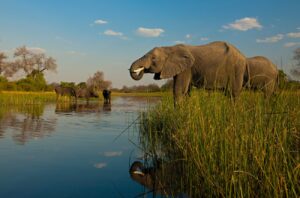
Elephants
Chobe is renowned for its massive elephant population, estimated to be around 50,000. These gentle giants are a highlight for visitors, often seen in large herds along the riverfront. The best time to observe elephants is during the dry season, from May to October, when they congregate around water sources.
Lions
The park’s diverse habitats support healthy populations of lions. The Savuti area, in particular, is known for its lion prides that have adapted to hunting large prey such as elephants and buffaloes. Watching these majestic predators in action is a thrilling experience.
Buffaloes
African buffaloes are another common sight in Chobe National Park. These robust animals are often seen in large herds, grazing in the grasslands and near water bodies. Their presence attracts predators like lions and hyenas, making for exciting game viewing.
Birds
Chobe is a birdwatcher’s paradise, with over 450 bird species recorded. From the colorful lilac-breasted roller to the majestic African fish eagle, the park offers a diverse avian spectacle. Birdwatching is particularly rewarding during the wet season, from November to April, when migratory birds arrive.
Other Wildlife
In addition to elephants, lions, and buffaloes, Chobe National Park is home to a wide range of other wildlife, including leopards, cheetahs, giraffes, zebras, hippos, crocodiles, and various antelope species. The park’s diverse ecosystems ensure that every safari experience is unique and full of surprises.
Safari Activities in Chobe National Park
Chobe National Park offers a variety of safari activities, allowing visitors to explore its rich wildlife and stunning landscapes:
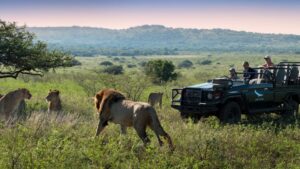
Game Drives
Game drives are the most popular way to explore Chobe National Park. Experienced guides take visitors on thrilling journeys through the park, providing insights into the behavior and ecology of the animals. Game drives are available in the early morning and late afternoon, offering the best chances to see wildlife.
Boat Safaris
Boat safaris along the Chobe River are a highlight for many visitors. These cruises provide a unique perspective, allowing you to observe animals from the water. Elephants crossing the river, hippos basking in the sun, and crocodiles lurking on the banks are just a few of the sights you can expect.
Birdwatching
With its rich avian diversity, Chobe is a birdwatcher’s dream. Guided birdwatching tours are available, led by experts who can help you spot and identify the park’s many bird species. Whether you are a seasoned birder or a novice, these tours are a fantastic way to appreciate Chobe’s birdlife.
Photography Safaris
Chobe National Park is a paradise for photographers. The park’s stunning landscapes and abundant wildlife provide endless photo opportunities. Specialized photography safaris are available, led by professional photographers who offer tips and techniques to capture the perfect shot.
Best Time to Visit Chobe National Park
Chobe National Park can be visited year-round, but the best time to go depends on your interests:
Dry Season (May to October)
The dry season is the most popular time to visit Chobe. The weather is cooler, and animals congregate around water sources, making wildlife viewing easier. This is the best time to see large herds of elephants and other animals along the Chobe River.
Wet Season (November to April)
The wet season brings lush landscapes and an abundance of birdlife. While wildlife viewing can be more challenging due to the dense vegetation, this is a great time for birdwatching and witnessing the park’s dramatic transformation. The wet season also sees fewer tourists, offering a more exclusive experience.
Accommodation in Chobe National Park
Chobe National Park offers a range of accommodation options to suit different budgets and preferences:

Luxury Lodges
For a luxurious and immersive safari experience, several high-end lodges are located within and around the park. These lodges offer top-notch amenities, personalized service, and stunning views of the surrounding wilderness.
Safari Camps
Safari camps provide a more rustic and close-to-nature experience. These camps are often located in prime wildlife areas, allowing you to be in the heart of the action. Many safari camps offer guided game drives and walking safaris.
Camping
For the adventurous traveler, camping is a great way to experience Chobe National Park. There are several designated campsites within the park, offering basic facilities and a chance to sleep under the stars surrounded by the sounds of the wild.
Conservation Efforts in Chobe National Park
Chobe National Park plays a crucial role in wildlife conservation in Botswana. The park’s management focuses on preserving its diverse ecosystems and protecting its wildlife. Anti-poaching initiatives, community involvement, and sustainable tourism practices are some of the measures in place to ensure the park’s long-term health and viability.
Tips for a Successful Safari in Chobe National Park
To make the most of your visit to Chobe National Park, consider the following tips:
Plan Ahead
Research and plan your trip well in advance. Decide on the best time to visit based on your interests and book your accommodation and activities early, especially during the peak season.
Hire a Professional Guide
A knowledgeable guide can enhance your safari experience by providing insights into the park’s wildlife and ecosystems. They can also help you spot animals that you might miss on your own.
Pack Appropriately
Bring comfortable clothing, sturdy shoes, and essential items such as sunscreen, insect repellent, and binoculars. Don’t forget your camera to capture the incredible wildlife and landscapes.
Respect Wildlife
Always maintain a safe distance from animals and follow the park’s rules and guidelines. Respecting wildlife and their habitats ensures a safe and enjoyable experience for everyone.
Conclusion
Chobe National Park is a true wildlife haven, offering unforgettable safari experiences in one of Africa’s most diverse and beautiful landscapes. From the majestic elephants along the Chobe River to the thrilling predator sightings in Savuti, every moment in Chobe is filled with wonder and excitement. Whether you are a seasoned safari-goer or a first-time visitor, Chobe National Park promises an adventure of a lifetime. So pack your bags, bring your sense of adventure, and get ready to explore the incredible wilderness of Chobe National Park, Botswana’s premier safari destination.

